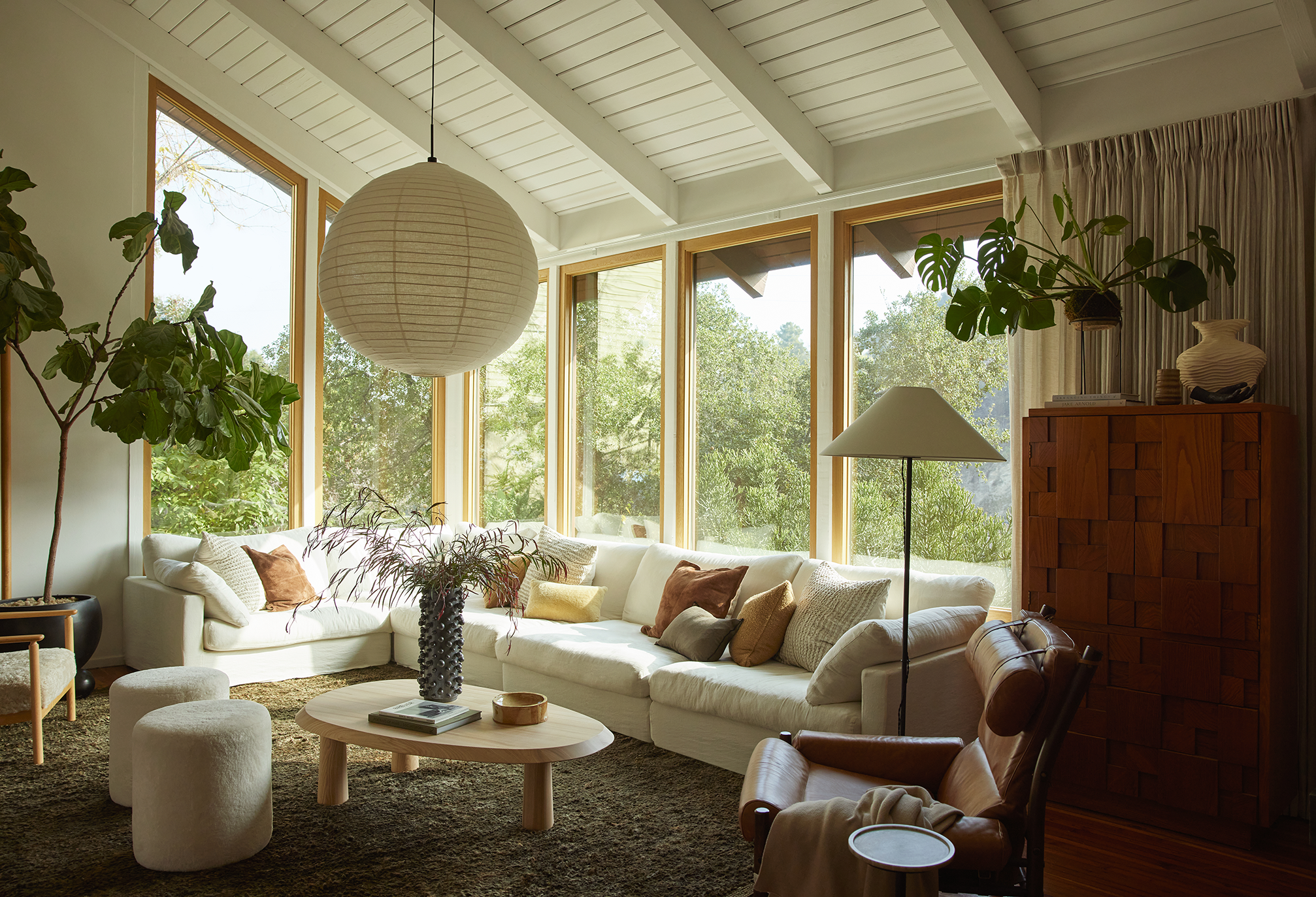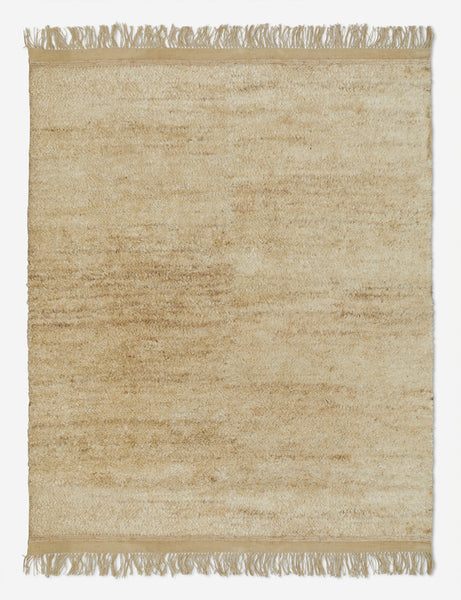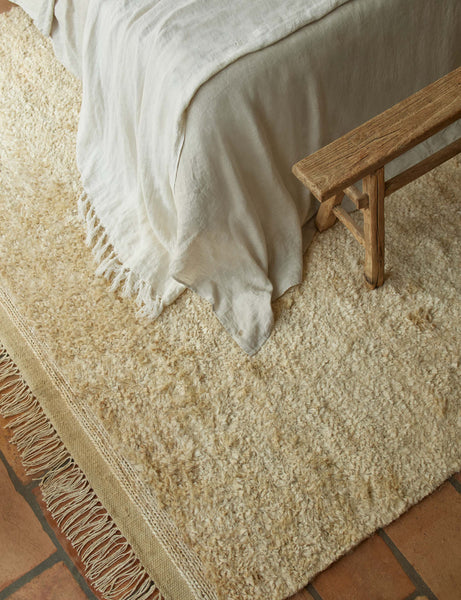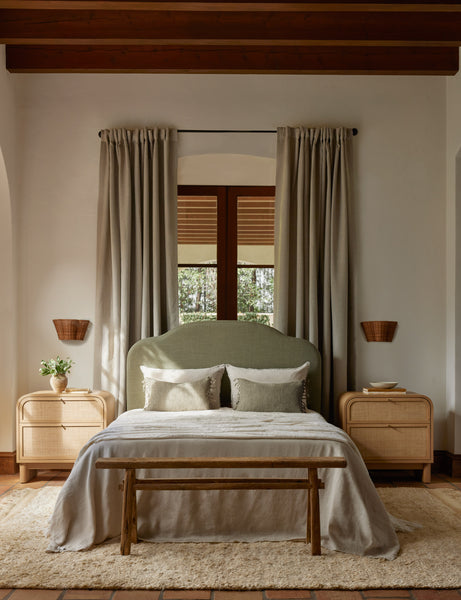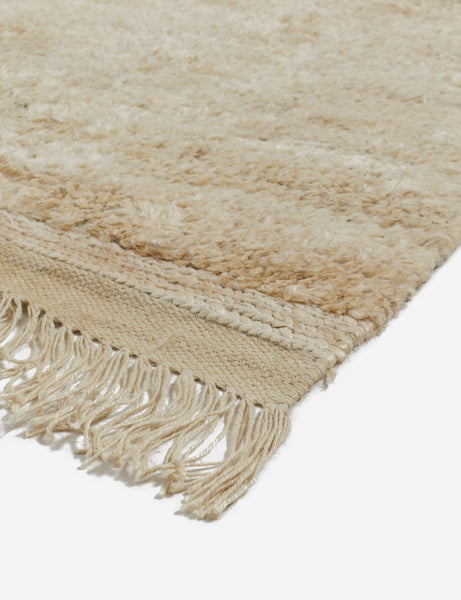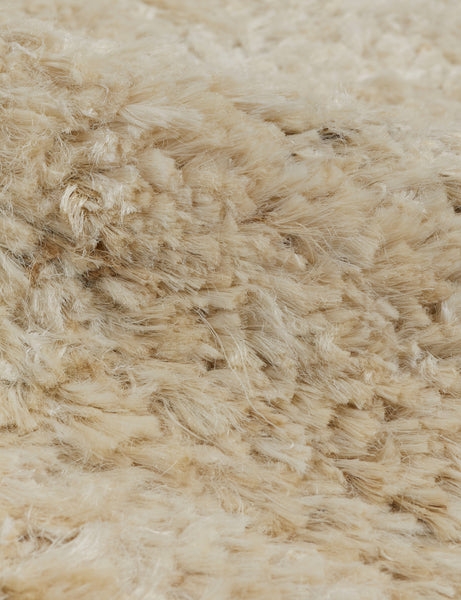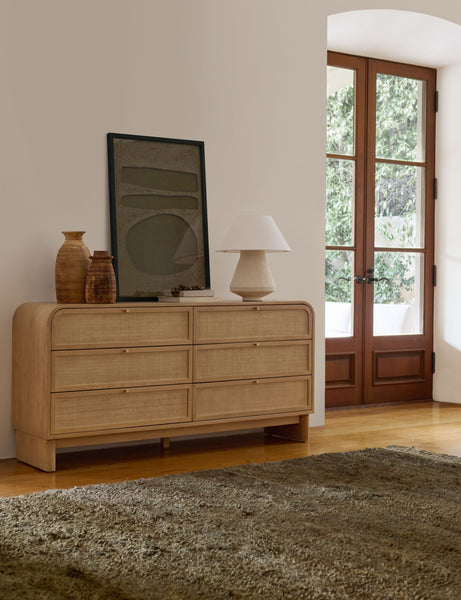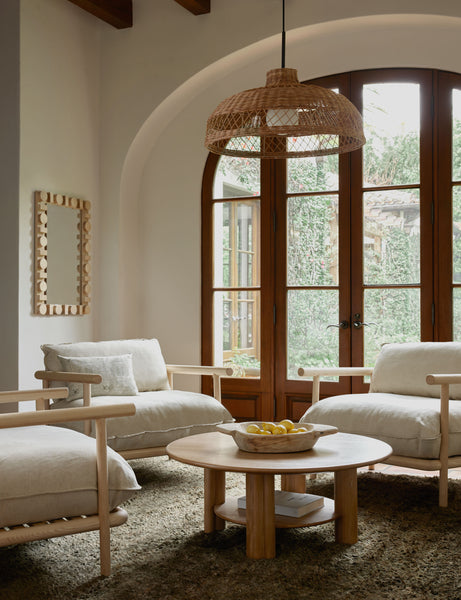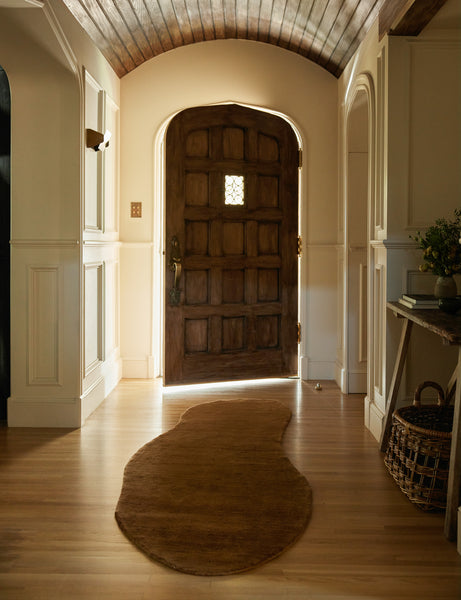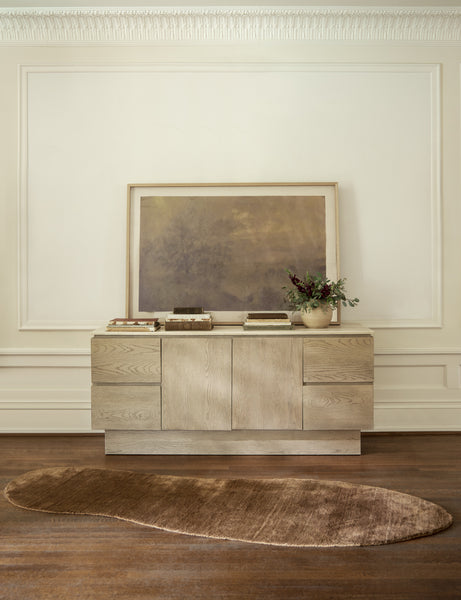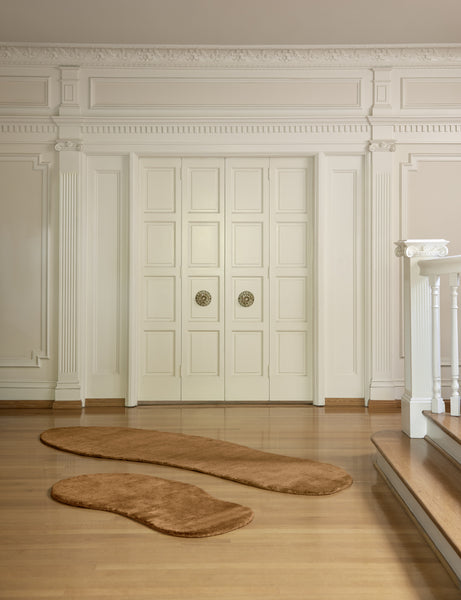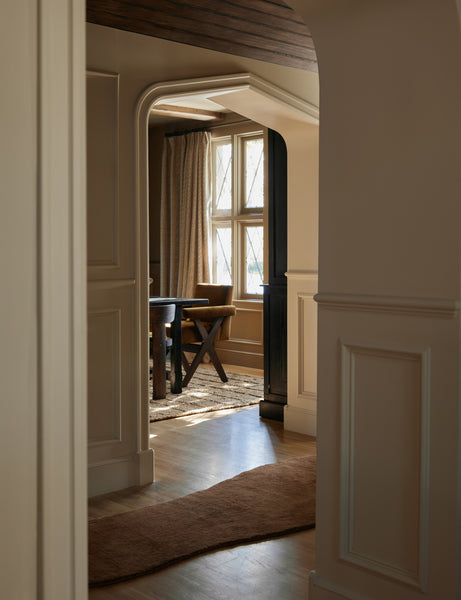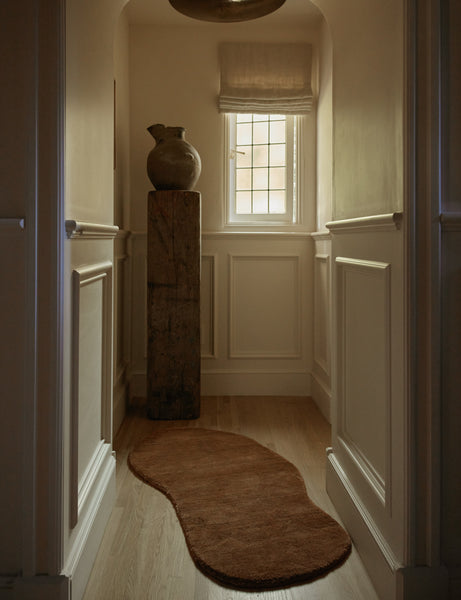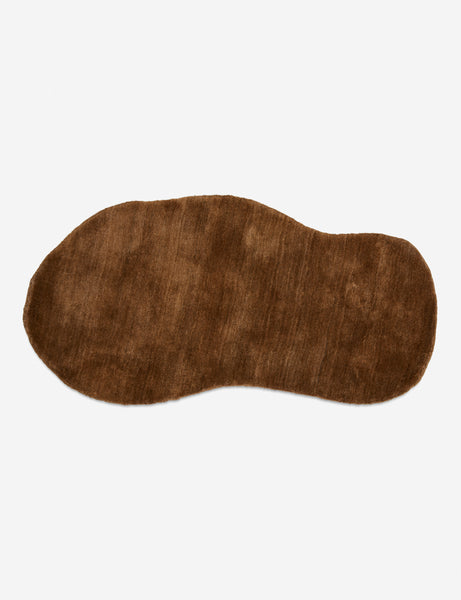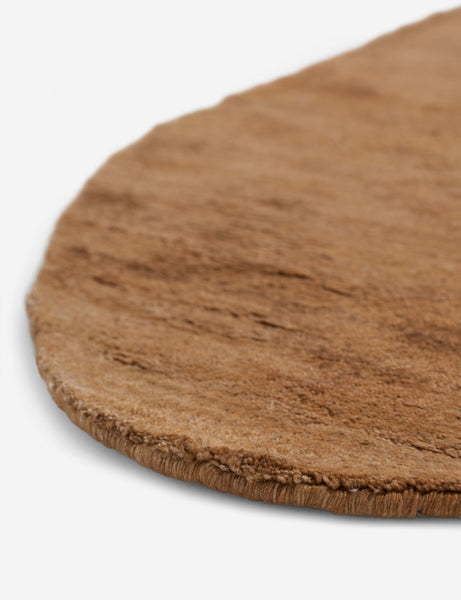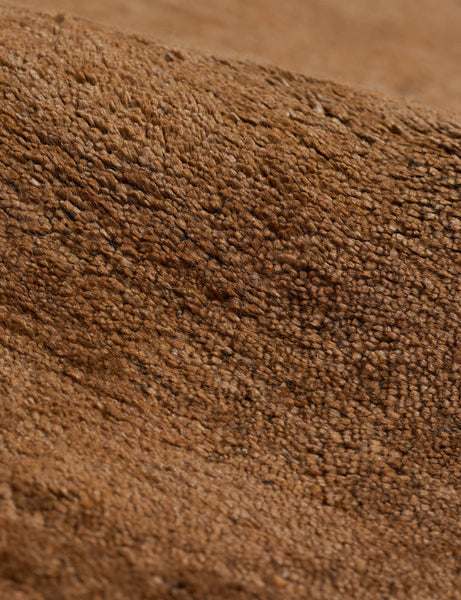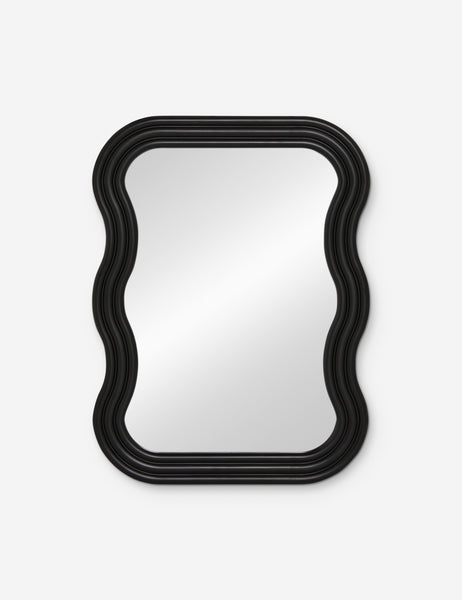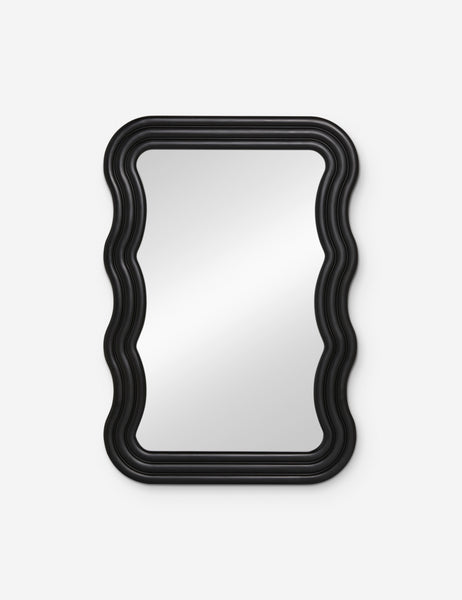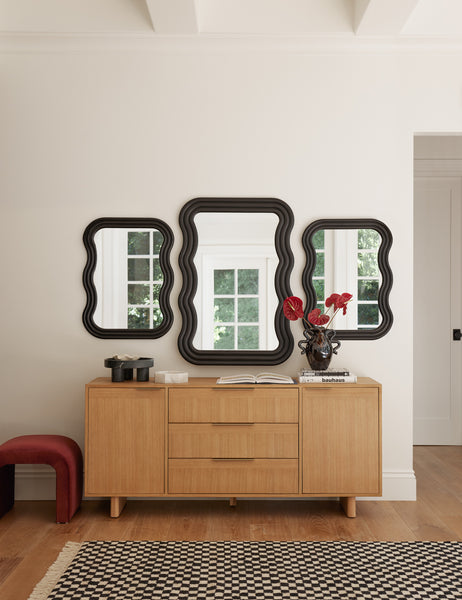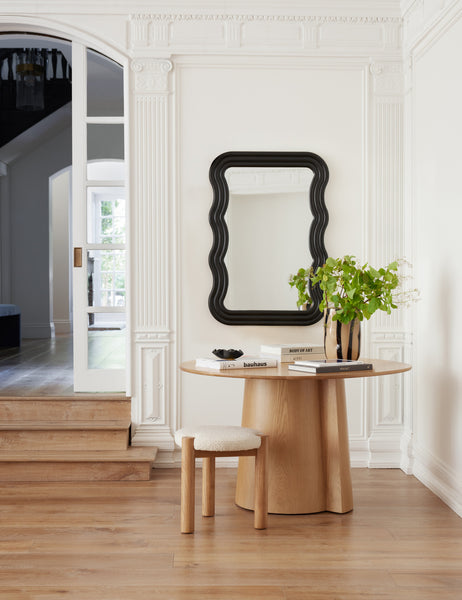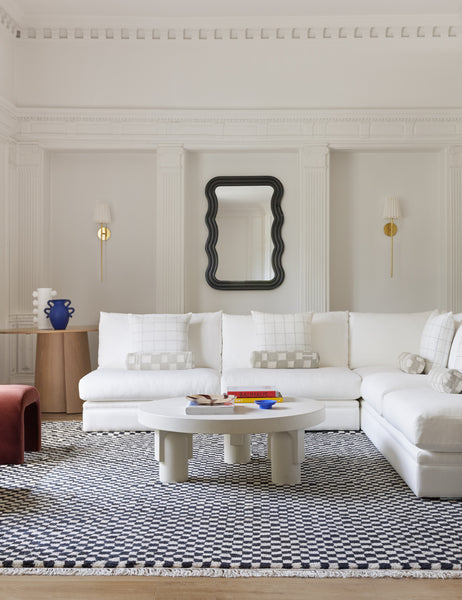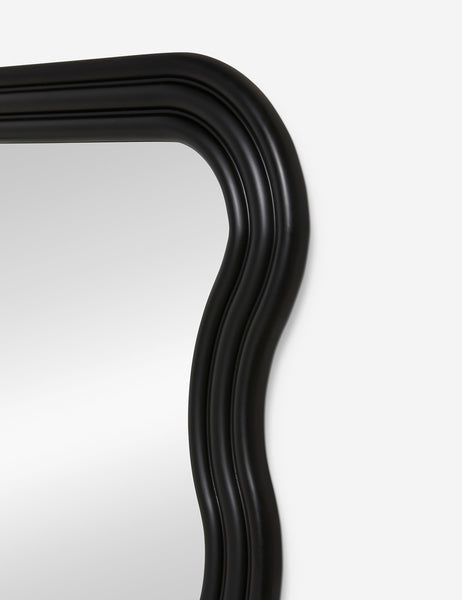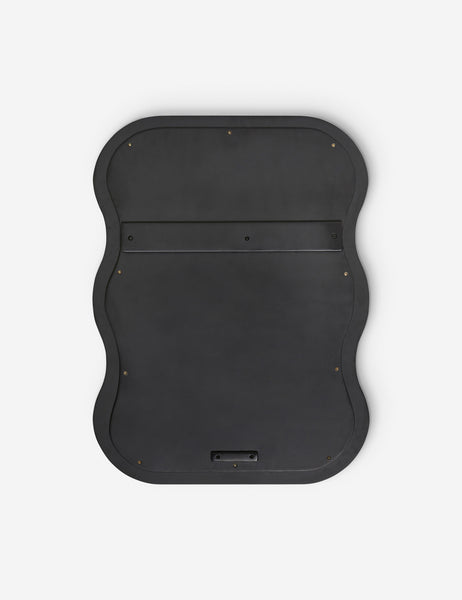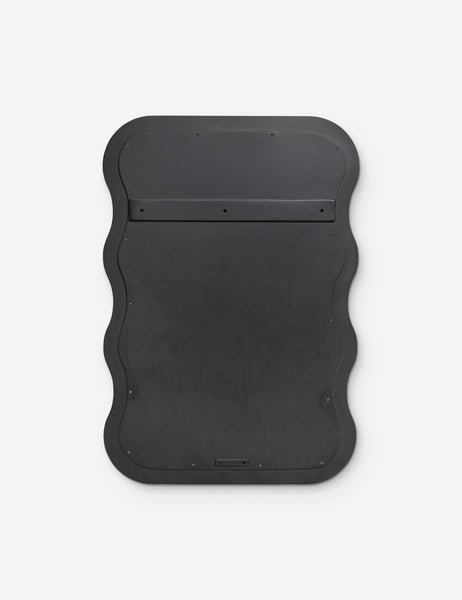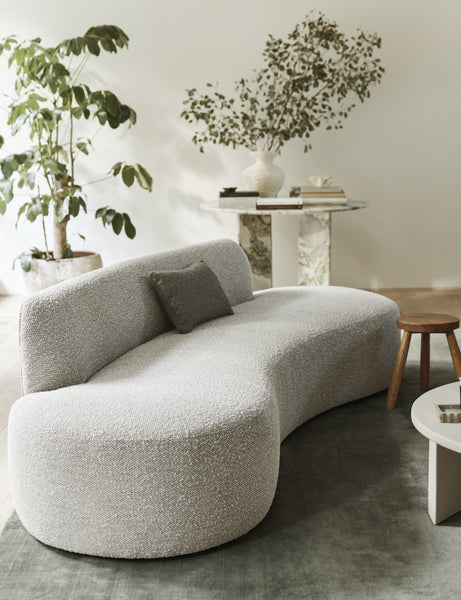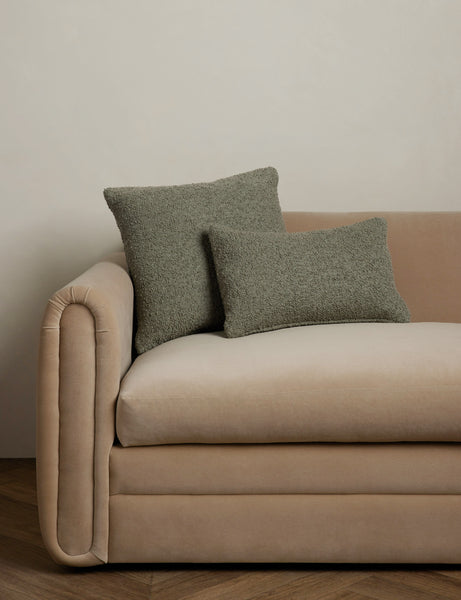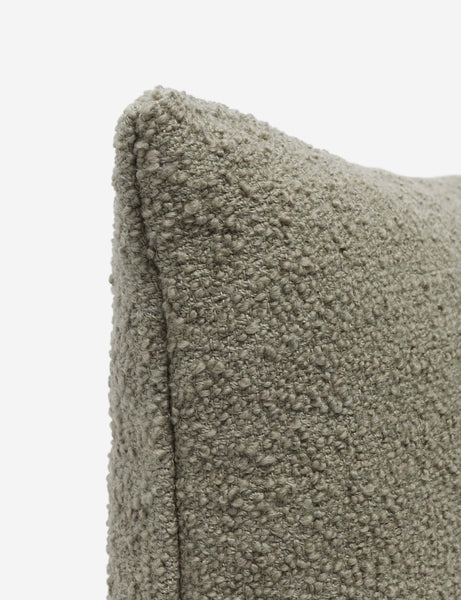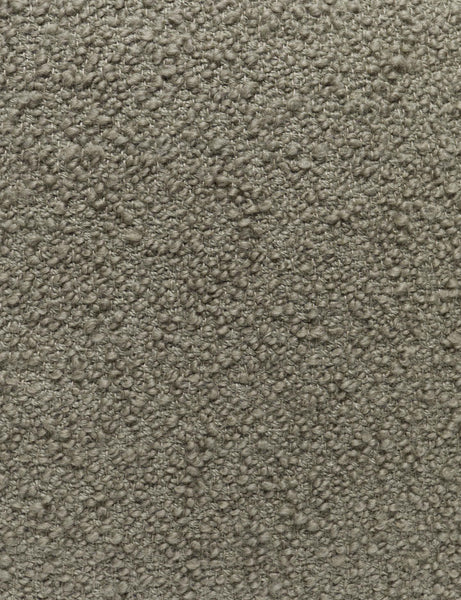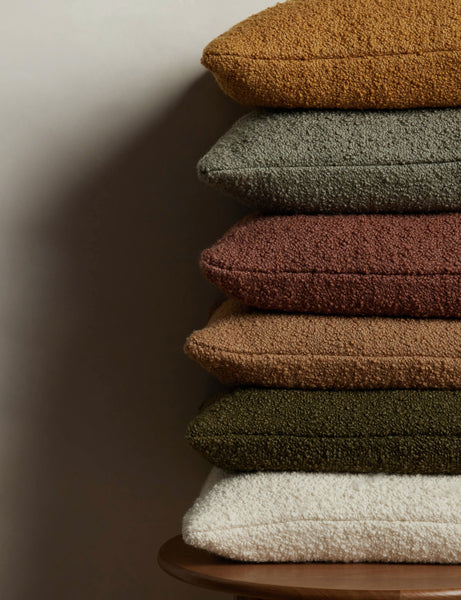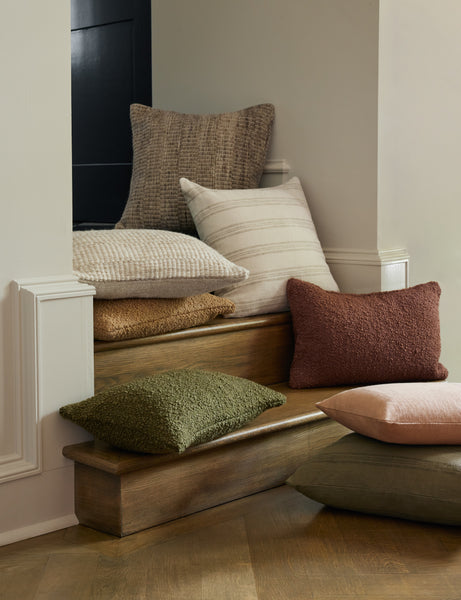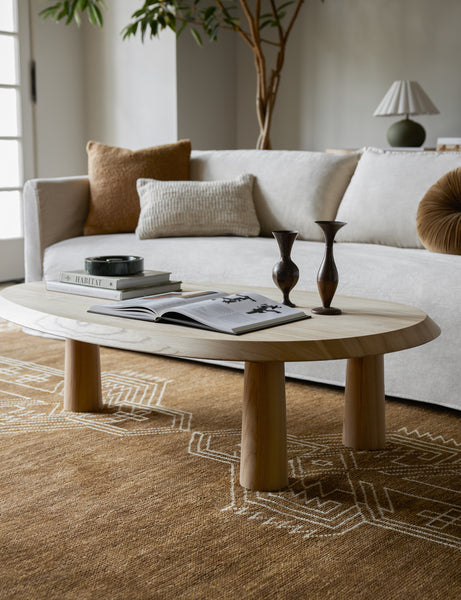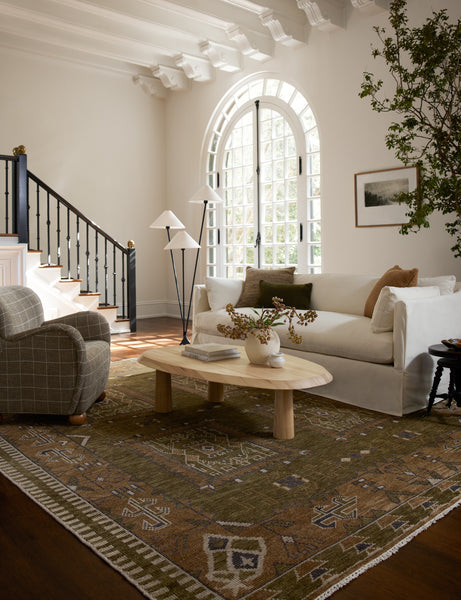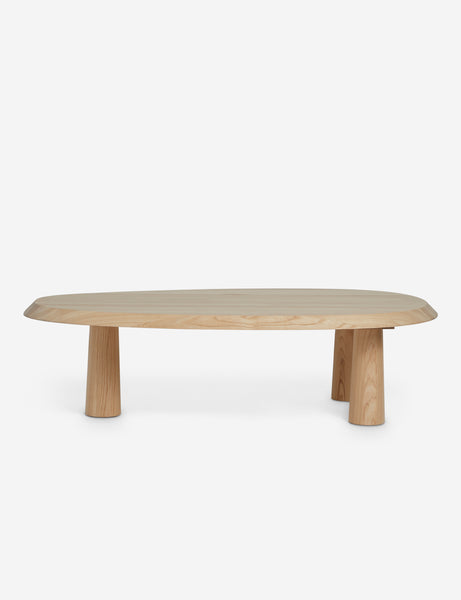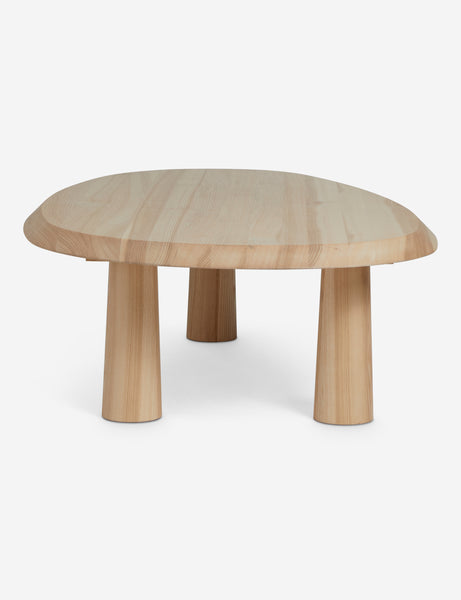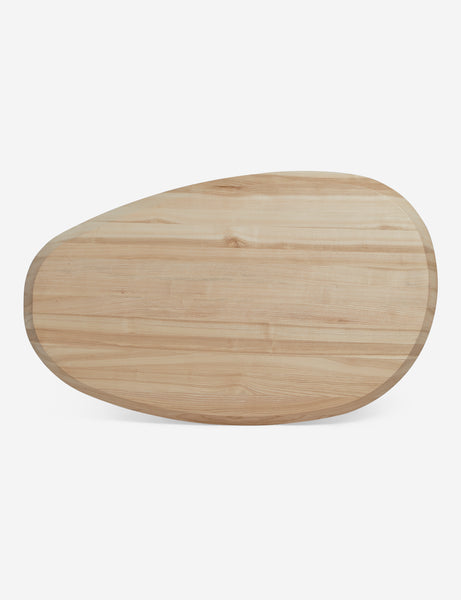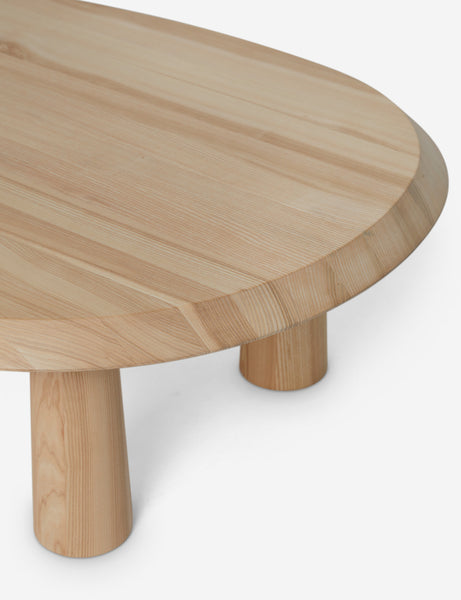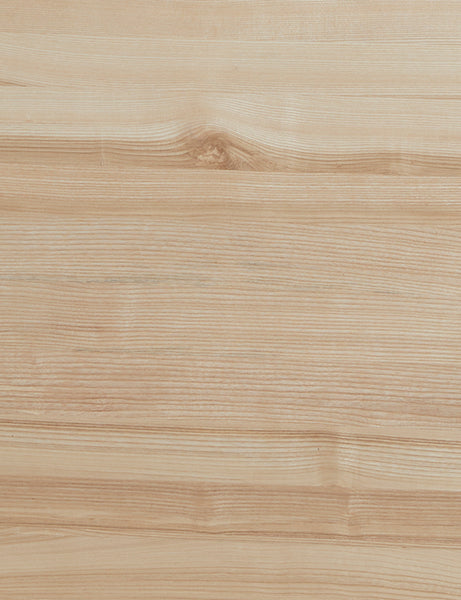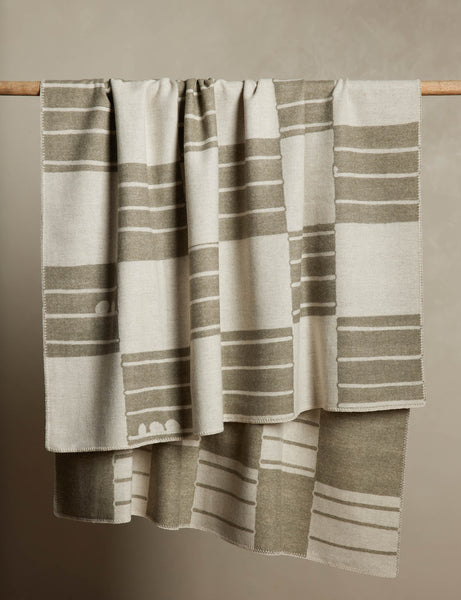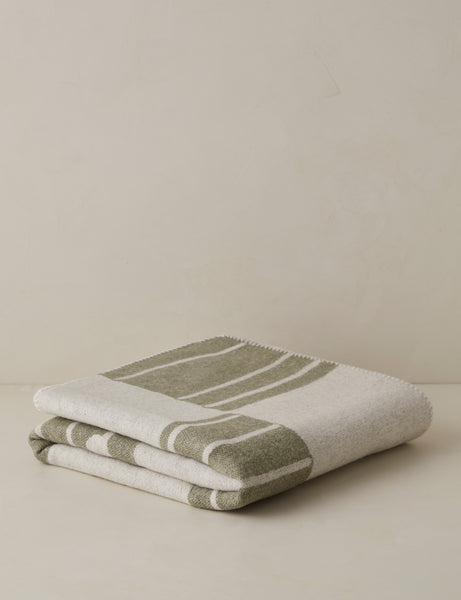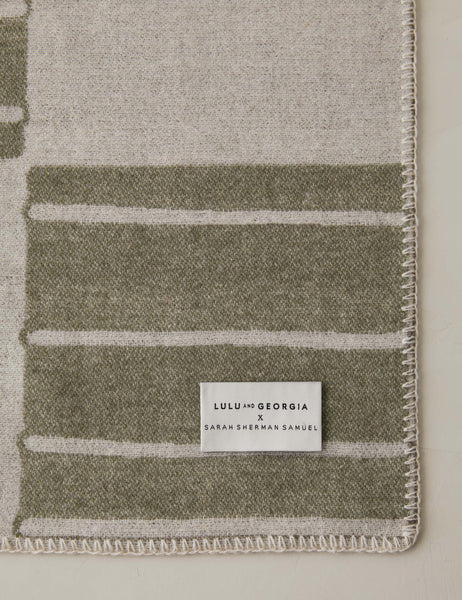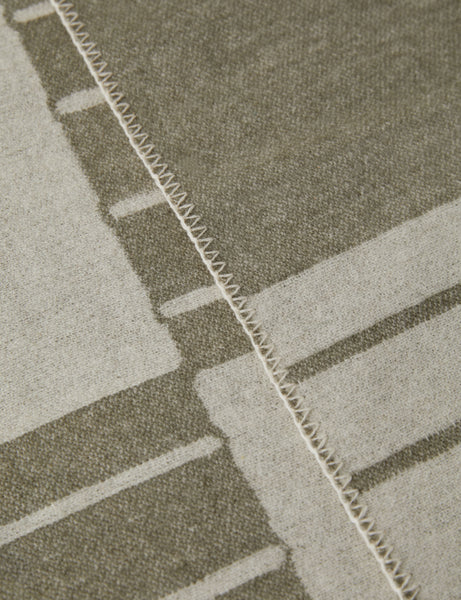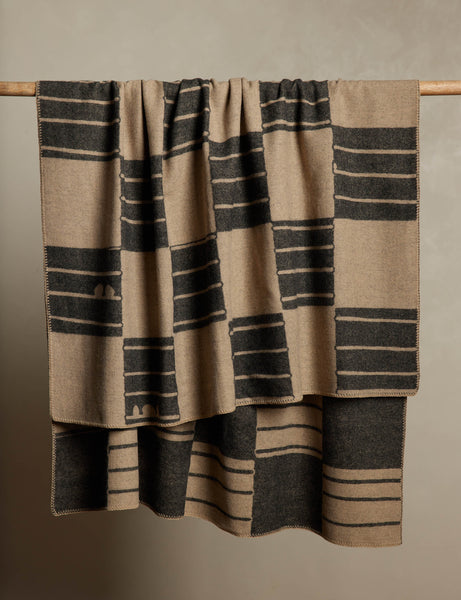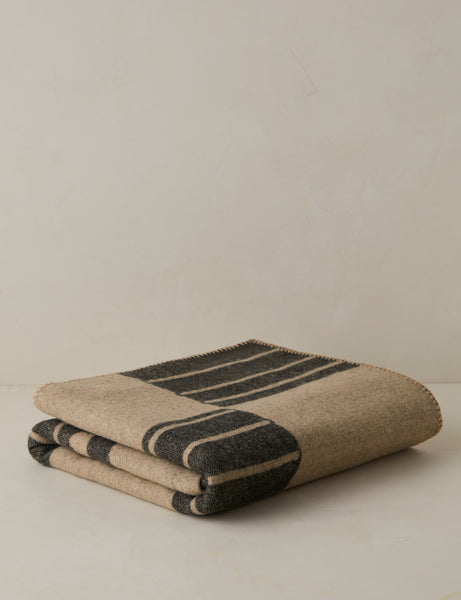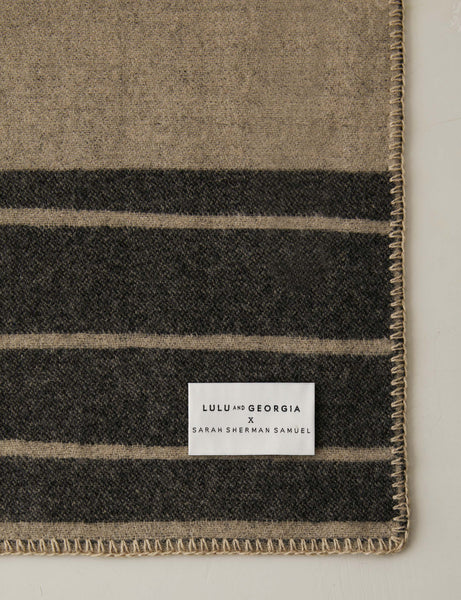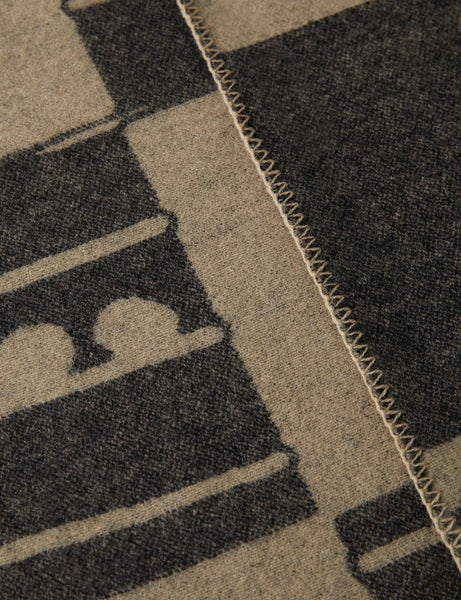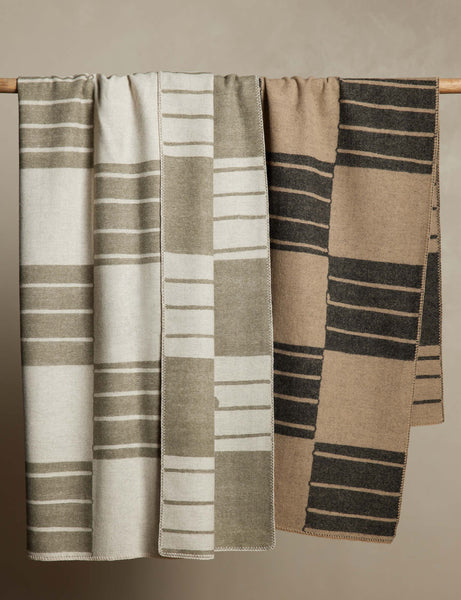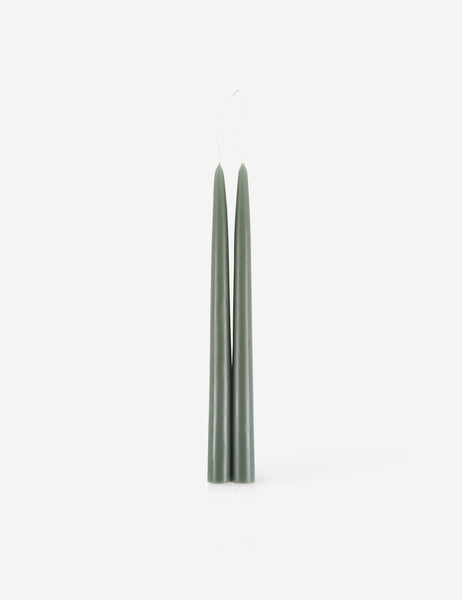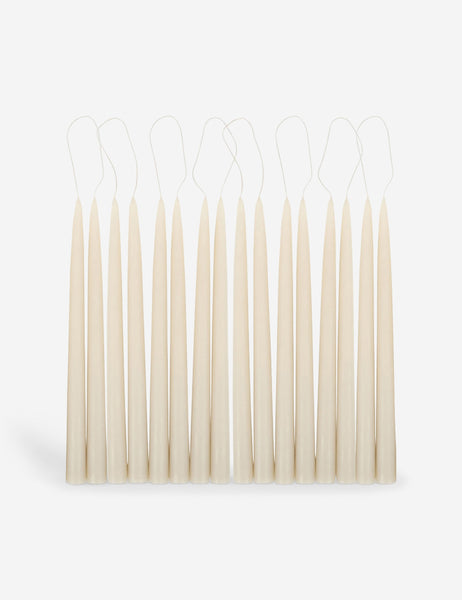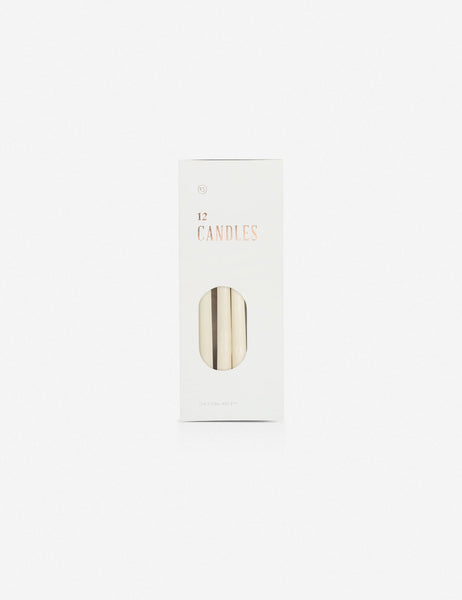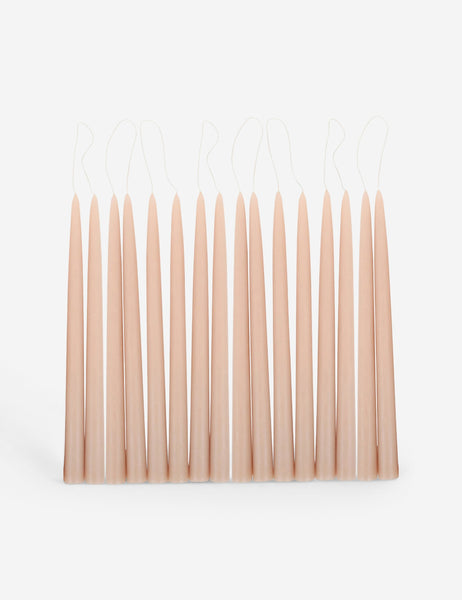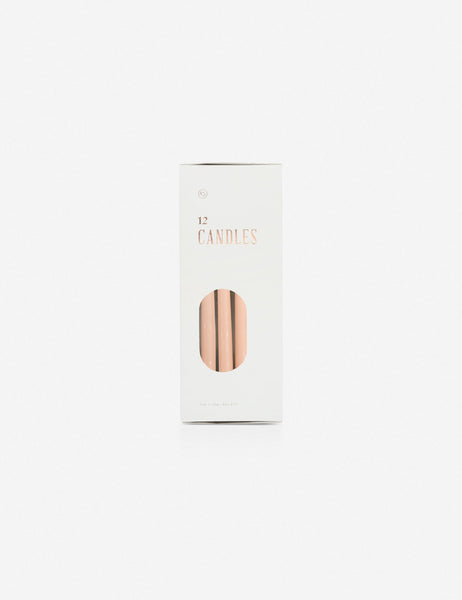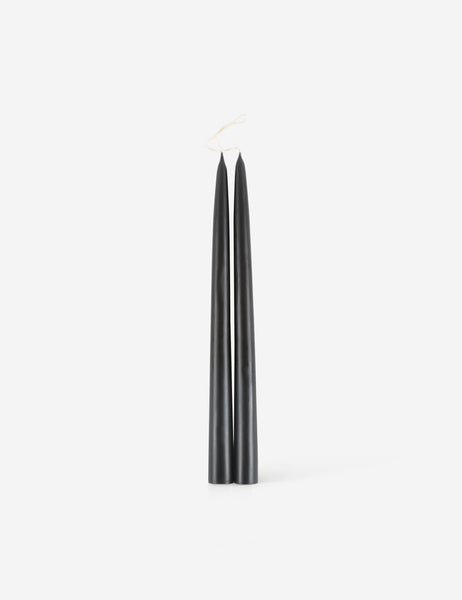It’s kind of the ultimate collab isn’t it? A creative director and a chef living in an L.A. treehouse? It’s the stuff of home design dreams and a space we couldn’t wait to see for ourselves. When Brady Tolbert and Jason Haro moved into their home in Los Angeles, they knew they’d need to create a space that spoke to both of their passions. For Brady, as Creative Director for Bobby Berk Design, that meant space to play, rearrange, and make the home uniquely theirs. For his partner and private chef of the Paleo Collective, Jason Haro, that meant plenty of room to host friends and serve up great meals. Together the home they’ve created is collected, personal, and layered, the kind of place you know you’ll be cared for in. We stopped by for a look at all of the L&G pieces Brady’s styled into the space and of course we couldn’t leave without some of Jason’s home cooking.
 |
 |

First Part of the Interview Questions answered by Brady Tolbert
We’ve been following the journey of your Treehouse home since you lived in an apartment in West Hollywood—are you starting to feel settled in, or does it still feel like a work in progress?
It is definitely starting to feel more and more like home but there is still so much that I want to do to the space. We’ve got some big renovations planned for the back half of the house (new kitchen, new dining, new bedroom) as well as some renovations upstairs in our room and bathroom so while I am starting feel more at home, we aren’t quite done yet and that is the fun of it for me. I love that your home can be an ever evolving space. I hate when people feel like their home has to be this picture perfect capsule and that once it’s done it’s done. Your home, just like you, over time is allowed to evolve and change and morph. That also gives me the freedom to not ever feel too precious about what is happening in my home as I can try something out without the fear that it has to stay that way forever.
By day, you’re a creative director with Bobby Berk, but you also seem to be a constant curator at home. How do you apply your professional eye to creating your own space?
My entire professional career has been working alongside someone else in the design world. At first it was as an assistant grabbing coffee and absorbing every word of every meeting and now it’s working as the Creative Director for Bobby Berk (where occasionally I do still make the coffee runs lol but also work on much larger scale projects and campaigns). But for me, the creative world is such a collaborative one and I wouldn’t be where I am today without the push and pull of ideas from many different people. Working in collaboration with people day in and day out allows you to see many different viewpoints and in turn create a more distinct and unique one for yourself. I hear a lot of people say that my home feels “collected” or “curated” and that is exactly what I love to do most. I love to pull from all different viewpoints, design styles, and themes to create something that feels personal and unique to me.
You have a knack for small, thoughtful touches. What are some tips for balancing a home design that wows guests but still feels livable and intimate?
Working as a prop-stylist for so many years I think that I have trained my eye to look at a space as a series of vignettes more so than a single room. So when I am bringing in pieces together I am always trying to create small moments that could stand alone as their own vignette. Oftentimes we get so overwhelmed looking at the big picture that it’s good to zoom in and just focus on one small aspect of a room. So when trying to create a home that feels inspiring but still intimate, focus on creating smaller vignettes within a larger space.
Jemsa Hand-Knotted Jute Rug
$269.00
Orb Candlestick by Sarah Sherman Samuel
$38.40
Rangely Hand-Knotted Rug by Jake Arnold
$278.00
Wendolyn Mirror
$224.00

Curating a built-in or larger shelf can be overwhelming, can you walk us through styling out your hallway?
Bookshelves are one of the hardest pieces to style (and that is coming from someone that has styled a lot of bookcases in my day). I still struggle with them but one thing that I always try to do is stick within a color palette. For me and my home, that is neutrals and that allows me to play around as much as I want without the scene getting to visually overwhelming to look at. I also always include books in my bookshelf. It may sound obvious but I see so many bookshelves out there that are void of actual books and while it may work for some the books actually help to create a foundation for you to style on and can help to create levels and balance across the shelves.
What key principles do you follow when arranging items to maintain balance and visual appeal?
Think of your items as a cast of characters. They can’t all be main characters and they can’t all be supporting roles. You have to have a good combo of both to create a dynamic and interesting setup. So when you’re arranging items I usually always follow the rule of three as well as create a hierarchy of heights within my styling. And you’ll often find that there are groups of three within a larger group of three which can create visual balance for your eye.
Your designs often feature a seamless blend of vintage and modern. How do you approach combining elements to create a timeless look and feel?
I’ve said it before and I’ll say it again. Stick within a cohesive color palette and you can truly find so much room to play around with different design styles, textures, and objects. I also love the juxtaposition of hard and soft, new and old, shiny and matte, etc. Contrast inherently will bring interest to your space (even if the contrast feels very subtle) and bringing that push and pull between different objects can create something that feels unique.
 |
 |
 |
Nedda Boucle Pillow
$29.00
Rodolfo Coffee Table
$978.00
Checkered Reversible Wool Throw by Sarah Sherman Samuel
$198.40
You've included some L&G products in your Treehouse home. What drew you to these specific pieces, and how do they contribute to the overall design aesthetic you wanted to achieve?
Where do I begin?! I feel like almost every vignette in my space has something from L&G. One of the most recent additions is the olive green rug in our living room. We previously had a cream rug in there which I loved but swapping in this green rug which brought more contrast to the space instantly gave the room a completely different feel. It feels more intimate and more cozy. It’s a reminder that we often don’t have to make major moves to give a different look and feel to our space and sometimes that can happen just by swapping one single piece or bringing in a new complimentary color.
At Lulu and Georgia, it’s our mission to bring beauty home. What does beauty at home mean to you?
At the end of the day your home is a space that should make you happy, a space that you feel like you can breathe in, and a space that brings you a sense of energy. Beauty at home is not necessarily about filling your home with beautiful objects but instead objects that bring you joy.

 Second Part of the Interview Questions answered by Jason Haro
Second Part of the Interview Questions answered by Jason Haro
What are some versatile comfort dishes you recommend for a night in?
Well first and foremost, pasta! There is nothing to me that says “comfort” more than a good pasta dish. It’s also super easy and you can basically whip up any variation with whatever proteins or veggies you’ve got laying around in your fridge. Another easy comfort food is pita pockets, think gyros but a bit healthier — sliced cucumber, greek yogurt, lemon, dill and grilled chicken.
What foods and cooking traditions define that “home and cozy” feeling for you?
Food has always been a very central part of my life. Growing up Cuban-American in Miami, FL food was one of the biggest ways I connected with my family and sometimes. It was always an exchange of love for us, so the dishes that continue to give me that “home and cozy” feeling are Cuban classics like picadillo and rice, “ropa vieja”, tostones, plátanos maduros, fried or boiled yuca, black beans, etc. These dishes are core to my culture and who I am as a chef — and not to mention, delicious!
What are your go-to ingredients or cooking techniques that can instantly elevate a dish, making it perfect for entertaining guests?
Easy! Technique wise, I love a braise — which is hilarious considering that in my profession you more often than not need to utilize faster cooking methods like searing or frying versus slower methods like braises, but I the truth is… that there is nothing better than braised short ribs when they’re so tender that they fall off the bone so I prefer the “low and slow” method — low heat over a long period of time.
As far as ingredients go, I love herbs! I can never get enough of them so I like to incorporate them into everything. Most recently I’ve been making salads and adding in a bunch of freshly chopped herbs like mint, basil, parsley, dill, chives and they immediately elevate the dish by bringing a unique hint of flavor to every single bite.
 Your dishes have to translate to a visual medium, how do you balance creating dishes that are aesthetically appealing with an exceptional taste experience?
Your dishes have to translate to a visual medium, how do you balance creating dishes that are aesthetically appealing with an exceptional taste experience?
Taste is one thing, which comes into play with what you put into the dish but I love to play with contrast in my dishes when it comes time to plate them. A fresh sprig of herbs on a pasta, or a drizzle of cream on a soup can instantly give it aesthetic appeal. You can also play around with height and textures which can elevate the look and feel of your dish.
What’s your one tip everyone should know before they step foot in the kitchen?
Oh this is something that my boss, Chef Natalie Pukasemvarangkoon, Founder of @paleocollective, reminds me of every single day — the energy you bring into the kitchen permeates into every single thing you make. Simply meaning, be cool, calm, and confident when entering the space. She also encourages me to approach cooking as a moving meditation since it will transpire into your dishes which I hold very near and dear to my heart.
 |
 |
 |

Pasta with Spicy Vodka Sauce
By Chef Jason Haro
Ingredients
For the Pasta:
- 1/2 cup olive oil
- 1 shallot, finely chopped
- 6 garlic cloves, minced or grated
- 16 oz. cup tomato paste
- 4 tablespoons vodka
- 2 cups heavy cream
- 4 tsp crushed red pepper flakes
- Salt and freshly ground black pepper, to taste
- 1 box of pasta of choice
- 4 Tbsp unsalted butter
- 3 oz. finely grated Parmesan cheese
For the Pesto:
- 2 cups basil leaves, loosely packed
- 3 Tbsp pine nuts, toasted
- 3 garlic cloves
- 1/3 cup grated parmesan cheese, grated
- 2 Tbsp lemon juice
- 1/4 tsp salt
- 1/3 cup olive oil
For the Garnish:
- 1 oz. finely grated Parmesan cheese
- 1/2 cup chopped fresh basil
- 2 oz. burrata
Directions
- Heat oil in a large pan over medium heat.
- Add shallot and garlic and cook, stirring occasionally, until softened and translucent.
- Add tomato paste and cook, stirring occasionally, until paste starts to caramelize and turns a brick red color.
- Add vodka and cook, stirring constantly, until liquid has mostly evaporated.
- Add red pepper flakes and cream, stir until well blended.
- Season with salt and pepper; remove from heat.
- Meanwhile, boil pasta of choice until al dente.
- Drain pasta, but make sure to reserve one cup of the pasta water.
- Add pasta to sauce along with butter and some of the pasta water. Cook over medium-low heat, stirring constantly and adding more pasta water if needed, until butter has melted and sauce is glossy.
- Taste sauce and season with more salt and pepper, if necessary.
- Plate pasta in a bowl of your choice. Garnish with burrata, torn in half, a drizzle of fresh pesto, a sprinkle of pine nuts and parmesan cheese.
- Serve and enjoy!
